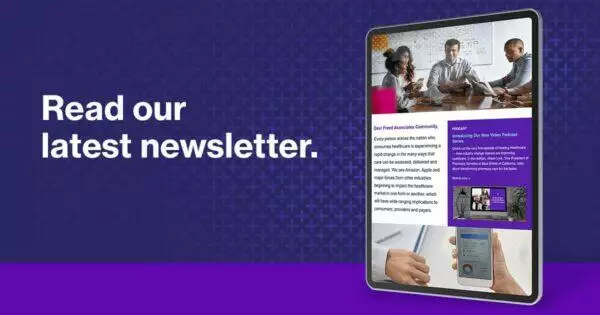Strategic Reporting Project Repositions Client for Enterprise System Success
A large health plan needed to support a new enterprise transactional system for processing member eligibility and claims processing. Gaining this understanding of data was important to address several business needs including tracking operational, financial.

Problem to Solve
With a huge growth in membership, a large health plan needed to support a new enterprise transactional system for processing member eligibility and claims processing. The primary departments charged with accessing and operating this new system – member eligibility and enrollment, claims, finance, marketing and provider services – did not yet have a fully standardized view of the organization’s enterprise data. Gaining this understanding of data was important to address several business needs including tracking operational, financial and regulatory/compliance performance and identifying and meeting market changes based on timely, data-based processes.
To maximize the efficiency and effectiveness of its new transactional system, the health plan sought to achieve an enterprise-wide standard for its operating reports and ad hoc analytical tools and methods. The health plan turned to Freed Associates (Freed) to determine and lead how this new enterprise-wide standard would be defined and delivered.
Strategy and Tactics
In collaboration with the client’s key information technology resources and relevant department contacts, Freed developed a report and analytics strategy that defined the architecture for a new, enterprise-wide standard. This also included details for creating a project plan and identifying a manager and operational reporting support team to deliver this new standard.
The architecture would specify the standardized enterprise data models, metadata and data integration and sourcing needed for the health plan’s operational reports and ad hoc analysis. The client’s IT and department subject matter experts would be required to provide the necessary reporting data flows, metadata definitions and transactional data requirements. The result of this work would document:
- How the enterprise system’s delivered data repository would be used as an enterprise metadata source for defining business subject areas, e.g., member, provider, claims, etc., as well as ETL data integration programs for the enterprise data warehouse.
- How data warehousing and reporting mechanisms would be standardized for developing reports, replacing various reporting tools to reduce costs and develop internal programming expertise.
- How the reporting environment would be defined in order to distinguish it from production transactions processing.
To lead and execute this work, a qualified reports architect was identified as well as a development team experienced in data warehousing and reporting mechanisms. This team led the metadata management work and data governance specifications. Additionally, a project manager was assigned to oversee a team of report analysts and developers to create standards for reports and ad-hoc business analytical capabilities.
To safeguard production environment performance while this work was going on, Freed created a near-real-time operational ad hoc environment that would provide reporting and analytical computing resources apart from the production transactional processing application.
Results
The client was able to create a new enterprise-wide standard for its operating reports and ad hoc analytical tools and methods. From these new reports and analytics capabilities, the client was able to capture business and operational performance activity, identify and address transactional workflow configuration gaps and recognize and immediately tackle data quality issues. This will significantly improve the health plan’s future productivity and revenue opportunities.
The ad hoc analytical capabilities proved to be critical for helping the health plan determine the root cause of issues related to its new system’s workflows and data flows and prepare for the system go-live and the system stabilization post go-live. These reports and analytical tools enabled the client to achieve its goal of creating an enterprise-standardized view for its organizational data.
Conclusion
Defining a new, coherent enterprise reporting strategy enabled the client to gain a standardized view of its data, with drill-down analytical tools that could address immediate data-related questions about transactions processing across business teams. Long-term, the client will continue to mature its supporting data governance processes. The health plan may also develop a reporting and analytics “community of excellence” to reinforce enterprise standards for its data, reporting and analytical processes, flows and tools.

